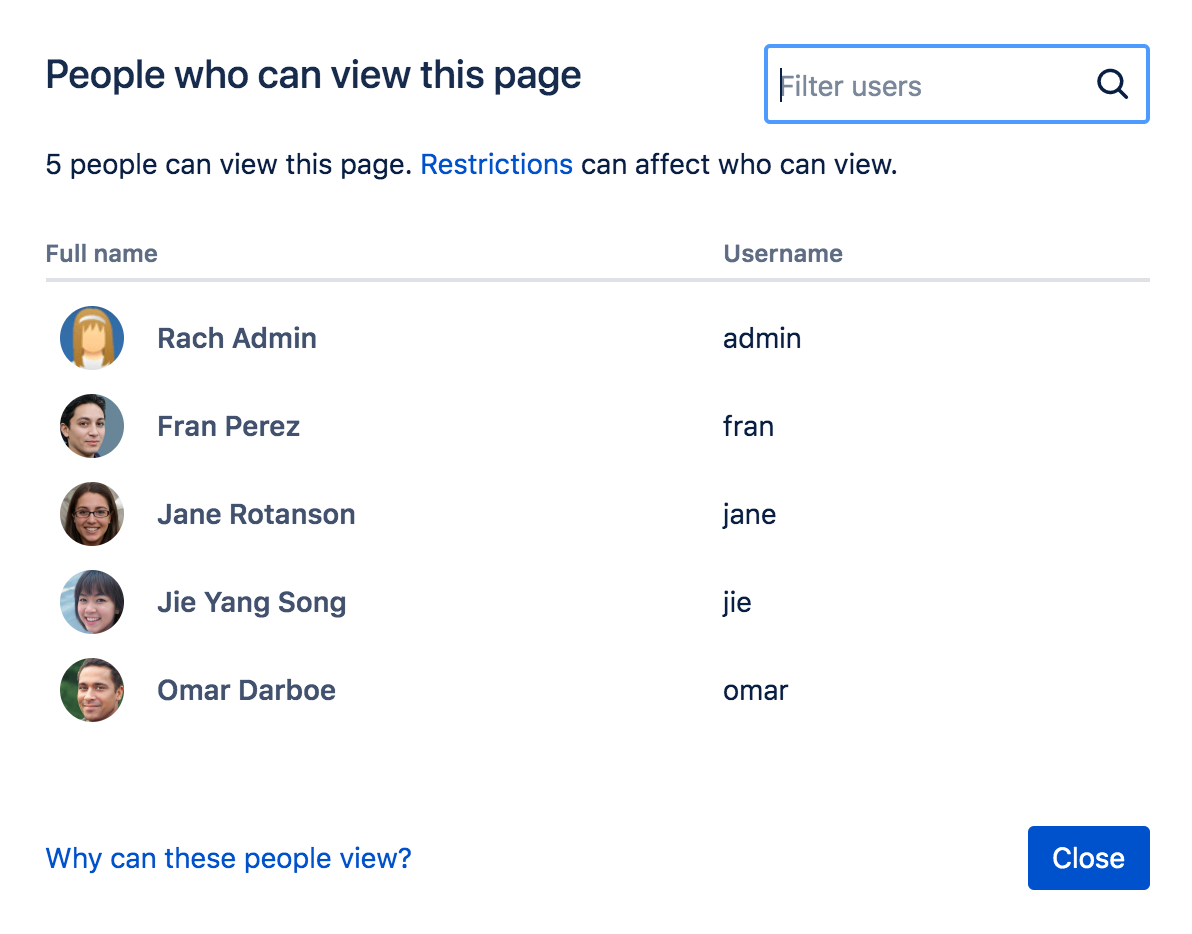The full presentation of the tool's capabilities can be found here: https://confluence.atlassian.com/doc/permissions-and-restrictions |
Conluence pages are open for viewing or editing by default |
To check who can view a page:

The restrictions icon at the top of the page gives you a clue that the page has restrictions:
| Viewing this page is not restricted. Everyone can see this page (but editing may be restricted). | |
| The page is restricted. Click the icon to see the list of who can view and edit this page. | |
| The page is inheriting restrictions from another page. Click the icon then choose Inherited Restrictions to see a list of pages this page is inheriting restrictions from. |
Page restrictions can be applied to published or unpublished pages and blog posts (drafts).
Don't forget, every page in Confluence lives within a space, and space permissions allow the space admin to revoke permission to view content for the whole space. Even the ability to apply restrictions to pages is controlled by the 'restrict pages' space permission. |
To restrict who can view or edit a page or blog post:
You can add as many users and/or groups as you need. You can apply page restrictions to published and unpublished (draft) pages.
In this example, some users and groups can view only, others can also edit, plus there are inherited restrictions that might impact who can view the page.
The diagram below shows the points at which someone could be prevented from viewing a page.